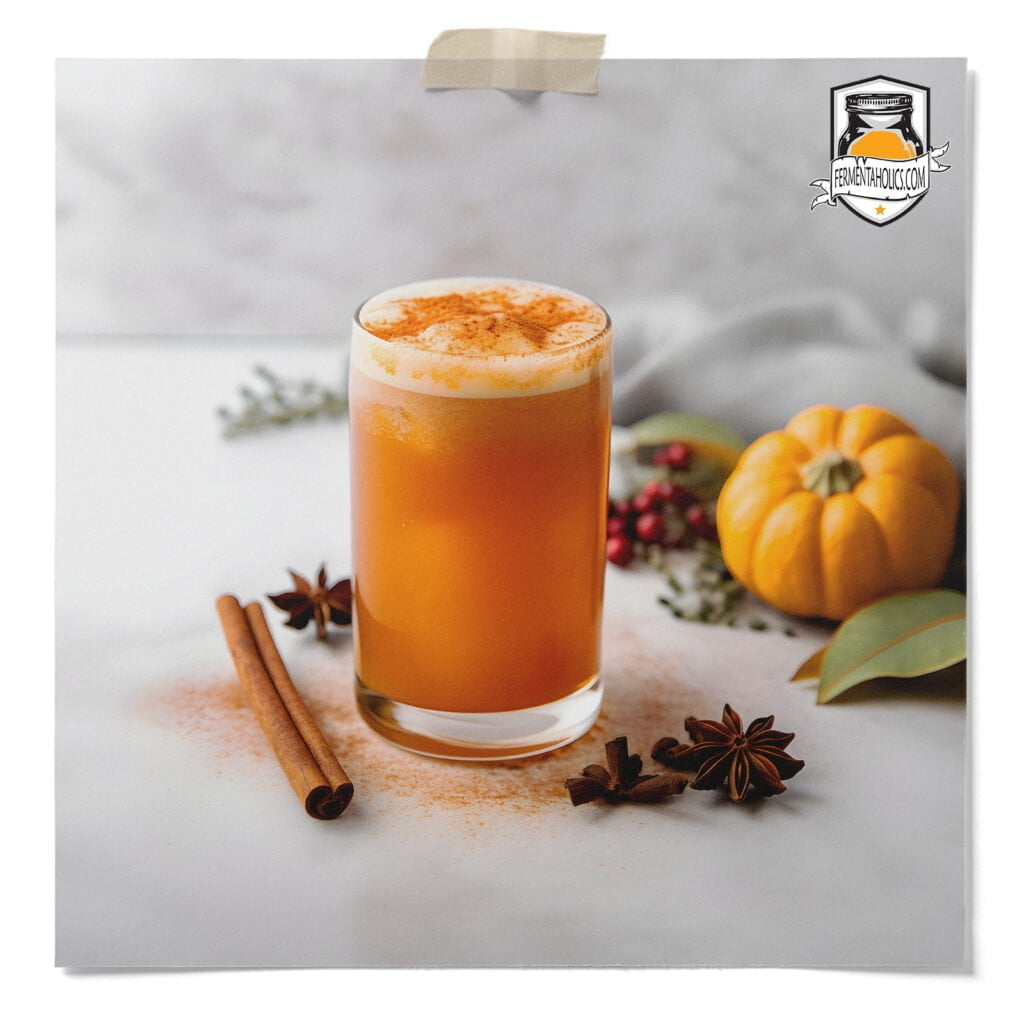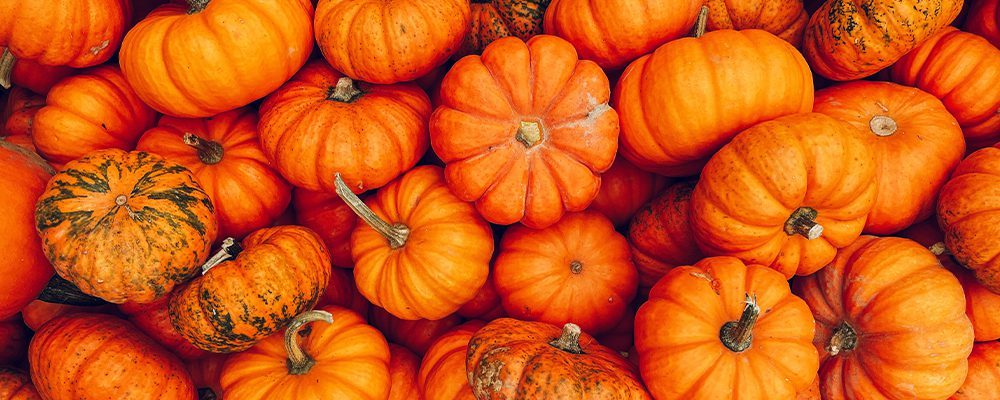

It’s that time of year again. Every commercial coffee shop in the US and abroad has lines around the building for that one-of-a-kind flavor. Oh ya – we’re talking pumpkin spice. Nothing says fall more than sipping on a beloved pumpkin spice beverage while watching the leaves turn colors. Believe it or not, the famous and beloved “PSL” – aka Pumpkin Spice Latte – was not mankind’s discovery of the wonderful flavor: pumpkin spice has been around for about 3,500 years, since traders traveled to the Spice Islands (Banda Islands) and harvested nutmeg. Obviously, these traders were on to something because now Pumpkin Spice is a fall staple – what would the season be without it? And now we combine it with sweet and tangy kombucha to give you – you guessed it, Pumpkin Spice Kombucha.
It’s important to note that making homemade kombucha is almost always a two-step fermentation process. Brewing kombucha is only a one-step process for those who prefer an unflavored flat kombucha. Otherwise, the steps consist of a primary fermentation and a secondary fermentation.
The primary fermentation is the first step of the kombucha brewing process. This is where your SCOBY transforms regular sweet tea into the tart and slightly sweet kombucha we love. At the end of this stage, you will have finished kombucha, but it will be flat and unflavored. Have you skipped this step? Then check out our guide on making kombucha at home or our guide on making jun kombucha at home. Traditional kombucha is going to yield a bolder brew, while jun kombucha is milder and a bit more tart.
The secondary fermentation is the step where you bottle, carbonate, and flavor your kombucha by the addition of sugar and flavors. This step is essentially adding a bit of sugar/flavor to each airtight bottle and letting it ferment a little longer, allowing the yeast to carbonate the beverage in an airtight environment naturally. How exactly does this happen? See our post on kombucha secondary fermentation here.
💡Since this recipe is for the secondary fermentation, to make this recipe, you’ll need to have kombucha that has finished the primary fermentation and is ready to bottle.
This recipe makes one 16-fluid-ounce bottle. A 1-gallon batch of kombucha will make seven 16-ounce bottles, so for one gallon, you will need to multiply the ingredients by 7. Before beginning this recipe, you will need to:
16 FL Oz Bottles
20
Minutes2-10 Days
This Pumpkin Spice kombucha recipe is for one 16 fluid-ounce bottle. For a gallon batch, make seven bottles. To scale this recipe to a gallon batch, multiply the ingredients by seven or toggle the serving size up to seven above. Before bottling your kombucha, remove the SCOBY pellicle along with 12-16 ounces of kombucha starter tea from your brew, and reserve for your next batch.
16 Oz Kombucha from a completed primary fermentation.
1 Pinch Pumpkin Spice
1/4 Cinnamon Stick
1-2 Cubes Diced Candied Ginger
1 Clove Clove
1 Whole Allspice Berry
1/8 TSP Vanilla Extract
16 Oz Swing Top Bottles
Add the spices, ginger, and extract to your bottle.
Top bottle off with kombucha, leaving about 1 to 2 inches of head-space. Tightly place the caps on each bottle.
Keep bottles at room temperature for 2-10 days; it will carbonate faster at higher temperatures and slower when cold.
Burp the bottles as necessary to release excess pressure. This is done by removing the cap to allow built-up pressure to escape then placing the cap back on.
Chill in the refrigerator once you’re happy with the carbonation levels. Based on preference, you can serve as is or strain before drinking.
